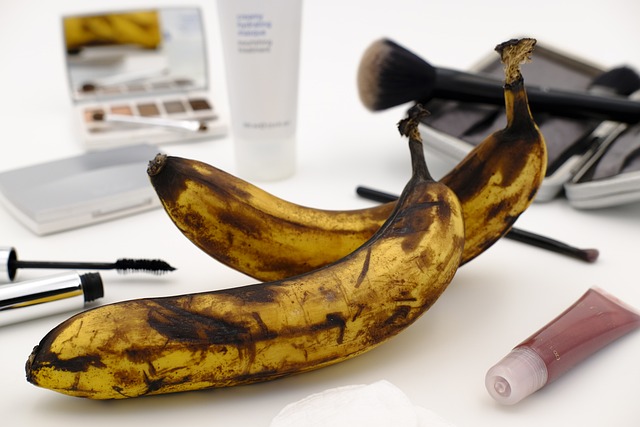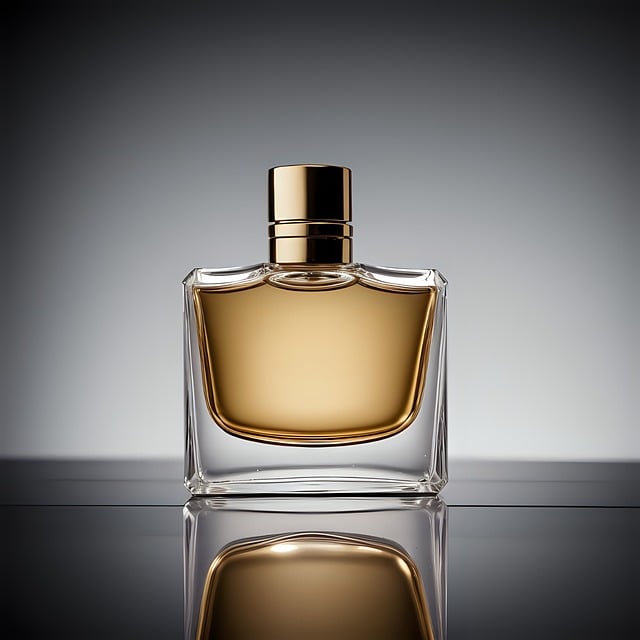Anti-aging treatments have advanced rapidly, offering diverse options from dermatology, surgery, PRP, and laser therapy. Each targets specific skin aging mechanisms, with tailored benefits for fine lines, wrinkles, age spots, and texture issues. Non-invasive methods like fillers and lasers provide immediate results, while surgeries offer permanent solutions. Choosing the right treatment requires personalized assessments by dermatologists, followed by proper post-care. The future looks promising with advanced technologies like AI and gene therapy aiming to address skin aging causes more effectively.
Unveil the secrets to targeted wrinkle reduction and discover modern anti-aging treatments. From understanding the science behind these interventions to exploring common therapies—non-invasive filler injections, toxic substances, and laser technology, as well as more invasive surgical options—this article covers it all. Learn about choosing the right treatment, safety considerations, post-procedure care, and future trends in this burgeoning field.
Understanding Targeted Wrinkle Reduction: Unveiling the Concept

Understanding Targeted Wrinkle Reduction: Unveiling the Concept
Targeted wrinkle reduction is an anti-aging treatment that focuses on specific areas prone to wrinkling. By leveraging advanced technologies and scientific insights, this approach aims to minimize the appearance of fine lines and wrinkles without invasive procedures. It works by stimulating collagen production, improving skin elasticity, and breaking down damaging free radicals—all of which contribute to healthier, smoother skin.
Unlike general facial treatments that target the entire face, targeted wrinkle reduction pinpoints areas like forehead, eyes, and mouth, where wrinkles tend to form earliest and most prominently. This precision allows for more effective results, addressing the root causes of wrinkling rather than merely smoothing out existing lines.
The Science Behind Anti-Aging Treatments: Key Players and Mechanisms

The science behind anti-aging treatments is a complex and ever-evolving field. Key players include advancements in dermatology, cosmetic surgery, and emerging technologies like platelet-rich plasma (PRP) and laser therapy. These innovations target various mechanisms of skin aging, such as collagen degradation, elastin fiber breakdown, and cellular dysfunction. Collagen, responsible for skin’s structural support, declines with age, leading to wrinkles and reduced skin elasticity. Elastin, which provides skin its flexibility, also suffers degradation, contributing to loss of firmness. Anti-aging treatments aim to stimulate collagen and elastin production, improve skin texture, and reduce the appearance of fine lines and wrinkles.
Mechanisms employed by these treatments include stimulating fibroblasts—skin cells responsible for producing collagen—through topical ingredients like retinoids and peptides. Some techniques, like PRP therapy, utilize the patient’s own platelets to deliver growth factors that promote tissue repair and regeneration. Laser technology targets specific skin layers to stimulate collagen remodeling, reduce pigmentation, and improve overall skin tone. Each approach has its unique advantages and is tailored to address different concerns, offering individuals a comprehensive array of options for targeted wrinkle reduction.
Common Types of Targeted Wrinkle Reduction Therapies

There are several common types of targeted wrinkle reduction therapies that have gained popularity in the world of anti-aging treatment. One of the most widely used methods is topical application of retinoids, which are derivatives of vitamin A. These powerful ingredients stimulate collagen production and help to smooth fine lines and wrinkles over time. Another effective approach involves the use of peptides, short chains of amino acids that signal skin cells to enhance their repair mechanisms, leading to reduced appearance of age spots and wrinkles.
Chemical peels are another popular option, where chemical solutions are applied to the skin to remove dead skin cells and stimulate new growth. These treatments can range from mild to intense, depending on the specific needs and desired results. Laser therapy has also emerged as a highly effective method, using focused light energy to target and break up damaged collagen fibers, encouraging the body to produce new, healthy collagen for improved skin texture and reduced wrinkles.
Non-Invasive Approaches: Fillers, Toxins, and Laser Technology

Non-invasive approaches to targeted wrinkle reduction have gained significant popularity in the realm of anti-aging treatments. Fillers, such as hyaluronic acid or collagen stimulators, are injected into the skin to add volume and boost elasticity, temporarily smoothing out fine lines and wrinkles. Toxins, like botulinum toxin (Botox), work by relaxing facial muscles, preventing dynamic wrinkle formation. Laser technology offers precise targeting of specific skin layers, stimulating collagen production and breaking down pigmented spots for a more even complexion.
These innovative methods provide effective alternatives to more invasive procedures, minimizing downtime and offering immediate yet natural-looking results. They are particularly appealing to those seeking subtle enhancements without the associated risks and recovery periods of traditional surgery.
Invasive Procedures: Surgical Options for Advanced Aging Concerns

For those with advanced aging concerns, invasive procedures offer more permanent solutions. Surgical options like facelifts, cheek fillers, and brow lifts can significantly reduce wrinkles and improve facial contouring. These procedures directly target problem areas, providing immediate and lasting results. An experienced surgeon can tailor these treatments to individual needs, addressing specific issues such as sagging skin, deep forehead lines, or depleted cheek volume.
While anti-aging treatments come with various non-invasive alternatives, surgical interventions offer a more comprehensive solution for severe cases. They require careful consideration, thorough consultations, and recovery periods but can deliver remarkable transformations, enhancing overall facial aesthetics.
Choosing the Right Treatment: Individualized Assessments and Patient Expectations

Choosing the right anti-aging treatment involves a personalized assessment tailored to individual needs and expectations. Each patient’s skin is unique, with varying levels of damage and specific concerns like fine lines, wrinkles, or age spots. A qualified dermatologist will conduct a comprehensive consultation, taking into account factors like skin type, lifestyle, medical history, and budget. This individualized approach ensures that the chosen treatment aligns perfectly with desired outcomes, offering the best chance for successful wrinkle reduction.
Safety and Efficacy Considerations: Potential Risks and Benefits

When considering targeted wrinkle reduction as an anti-aging treatment, it’s crucial to weigh both potential benefits and risks. The safety and efficacy of any procedure or product should be a top priority. Benefits may include significant improvement in skin texture, reduced appearance of fine lines and wrinkles, and enhanced overall skin health. However, risks can vary from mild irritation and redness to more severe reactions like allergy or, in rare cases, scarring.
Choosing a reputable provider and understanding the active ingredients used are essential steps in mitigating these risks. Additionally, staying informed about clinical studies and customer testimonials can offer valuable insights into the treatment’s track record of success. Remember that every individual’s skin reacts differently, so consulting with a dermatologist to discuss your specific concerns and expectations is paramount before proceeding with any targeted wrinkle reduction method.
Post-Treatment Care and Recovery: Optimizing Results and Preventing Complications

After undergoing an anti-aging treatment like targeted wrinkle reduction, proper post-treatment care is crucial for optimizing results and ensuring a smooth recovery. This includes avoiding strenuous activities and direct sun exposure for the first few days to prevent irritation and potential complications. Using gentle, hydrating skincare products recommended by your dermatologist can aid in the healing process and minimize any redness or sensitivity.
It’s also essential to maintain a healthy diet rich in antioxidants and stay well-hydrated. Avoiding certain foods and beverages known to cause inflammation or disrupt skin health can contribute to a faster recovery. Remember that each individual’s reaction to treatment is unique, so follow your dermatologist’s instructions carefully and schedule regular check-ins to monitor progress and address any concerns promptly.
Future Trends in Anti-Aging Medicine: Emerging Technologies and Innovations

The future of anti-aging treatment promises exciting innovations and emerging technologies that could revolutionize targeted wrinkle reduction. One promising area is the use of advanced lasers and light-based therapies, which are becoming increasingly precise in targeting specific skin concerns. For instance, fractional laser technology offers a more targeted approach by creating micro-lesions, stimulating collagen production, and improving skin texture.
Additionally, the integration of artificial intelligence (AI) into dermatology is on the rise. AI algorithms can analyze vast amounts of data to predict and prevent age-related skin changes, offering personalized anti-aging plans. With advancements in gene therapy and stem cell research, we may also see treatments that address the underlying causes of skin aging, leading to more significant and lasting results.
